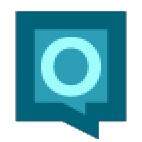1. DC Geeks just published their photos from Magfest 2012. This Pikachu car was in the dealer’s room. I wish I knew the story behind it.
2. My best friend, @TheHoffgod, just started a new blog, The 2012 Gaming Project. He’ll be playing 200 games this year for at least an hour each, and then writing up his impressions. His review of Ben There, Dan That, is delightfully surreal.
3. One of the commenters on my last post, matty, shared a link to Comic Book Resources’ take on Bandai and anime piracy:
This is exactly how people consume media nowadays. They sample, then buy. They don’t buy everything they sample, but if the samples are cut off, they won’t buy any more—and they might buy less. This is the new reality, and all the scoldings in the world won’t bring back the good old days.
4. The BBC’s report on booth babes at the Consumer Electronics Show transported me back to a simpler time, when men dealt with technology and women stood around looking sexy. It would’ve been quaint, if it hadn’t happened last weekend. I wish there was a way to comment on the video, because I certainly have a lot to say.
5. Listening to 2DTeleidoscope‘s latest podcast, “The Holy Land (Mini-Podcast 1 of 2: Akihabara and Comiket),” was like listening to a professionally produced episode of This American Life. Twelve minutes very well spent.
















